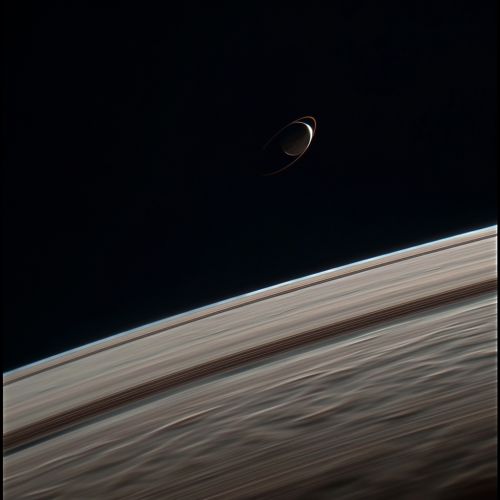Shepherd Moons
Overview
"Shepherd Moons" are a phenomenon observed in the field of astronomy that refers to small moons that orbit near the edge of a planetary ring system. These moons help to maintain the sharp edges of the rings through their gravitational influence, effectively "herding" the particles within the rings and preventing them from spreading out into space. This phenomenon was first observed in the ring systems of Saturn, but has since been identified in other gas giants within our solar system.


Discovery
The concept of shepherd moons was first proposed in the late 20th century by astronomers studying the intricate ring system of Saturn. The moons Prometheus and Pandora were identified as the primary shepherd moons of Saturn, orbiting on either side of the planet's F ring. The gravitational influence of these moons, despite their relatively small size, was found to be sufficient to maintain the sharp edges of the ring and prevent the particles within the ring from dispersing into space.
Mechanism
The gravitational influence of a shepherd moon on the particles within a ring system is a complex interplay of forces. As the moon orbits the planet, it exerts a gravitational pull on the particles within the ring. This pull is strongest on the particles closest to the moon, causing them to speed up and move towards the outer edge of the ring. At the same time, particles further away from the moon are pulled less strongly, causing them to slow down and move towards the inner edge of the ring. This differential in speed and direction helps to maintain the sharp edges of the ring and prevent the particles from spreading out into space.
Examples
While the most well-known examples of shepherd moons are found in the ring system of Saturn, similar phenomena have been observed in other gas giants within our solar system. For example, the moon Metis has been identified as a shepherd moon for the main ring of Jupiter, while the moons Cordelia and Ophelia perform a similar role for the epsilon ring of Uranus. In addition, the moon Galatea has been proposed as a potential shepherd moon for the Adams ring of Neptune, although this has yet to be confirmed.
Significance
The study of shepherd moons has provided valuable insights into the dynamics of planetary ring systems and the role of gravity in shaping these systems. In addition, the discovery of shepherd moons has helped to refine our understanding of the formation and evolution of our solar system. By studying these moons and their interactions with the ring systems they shepherd, astronomers hope to gain a better understanding of the processes that have shaped our solar system and, by extension, other planetary systems throughout the universe.
